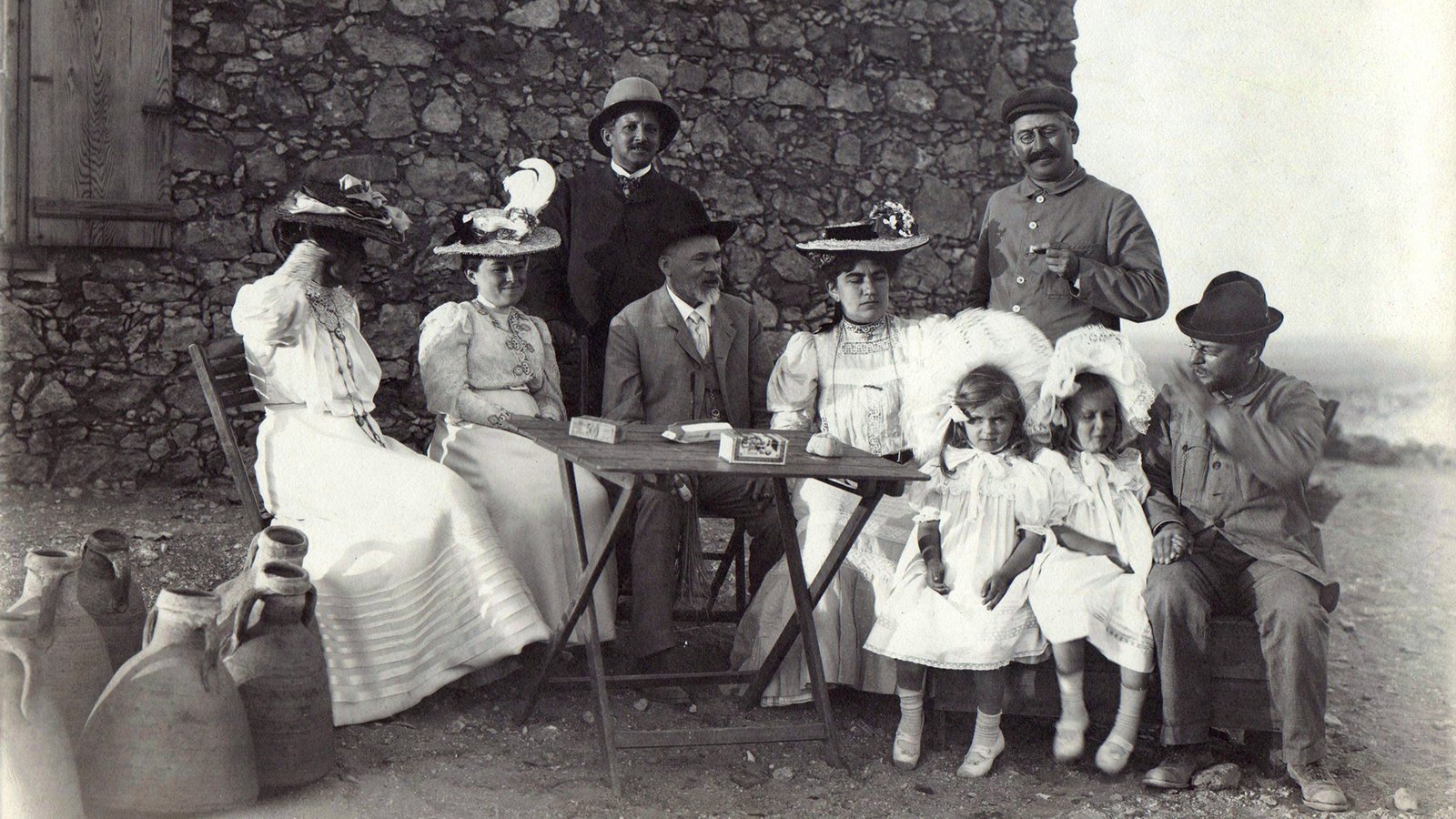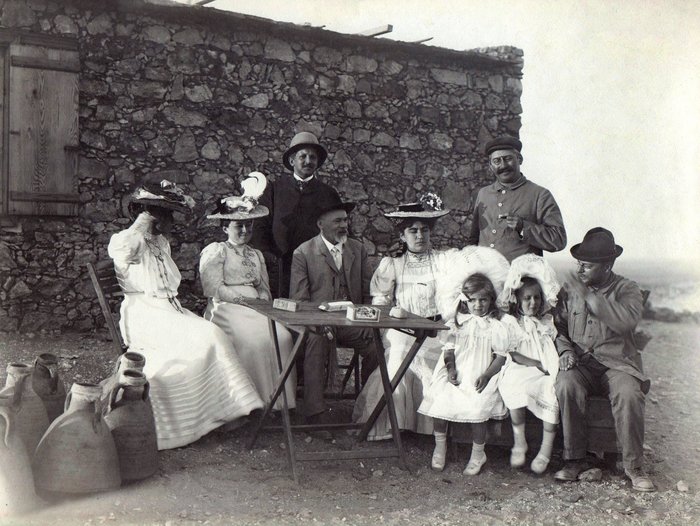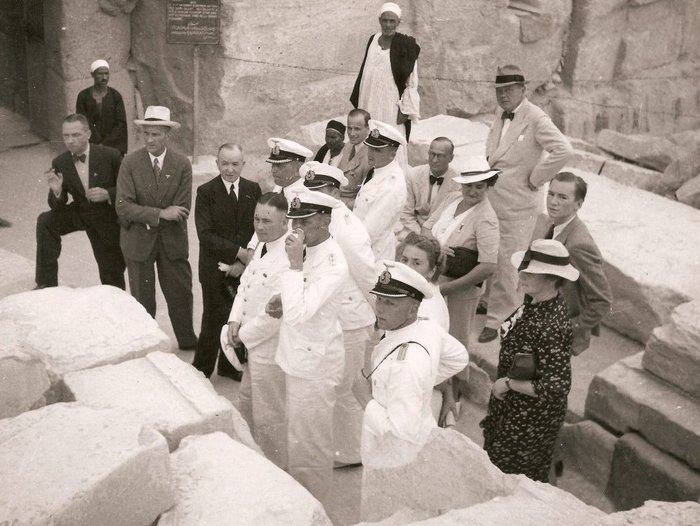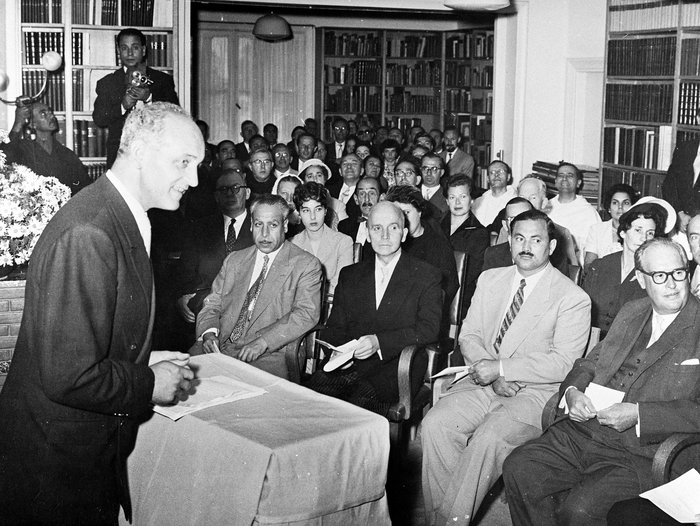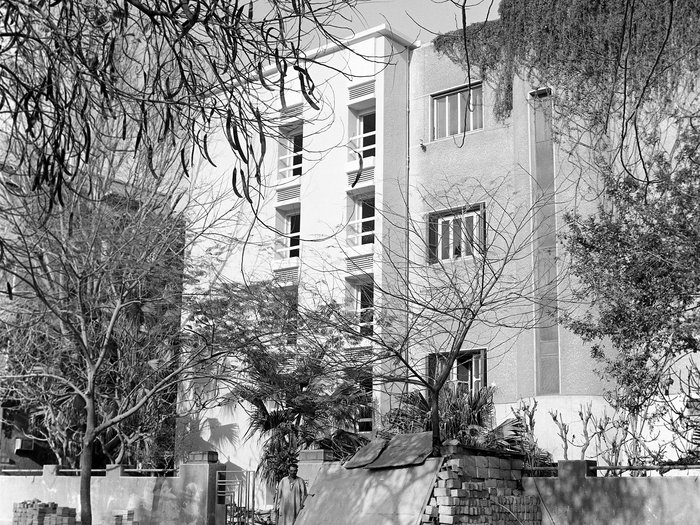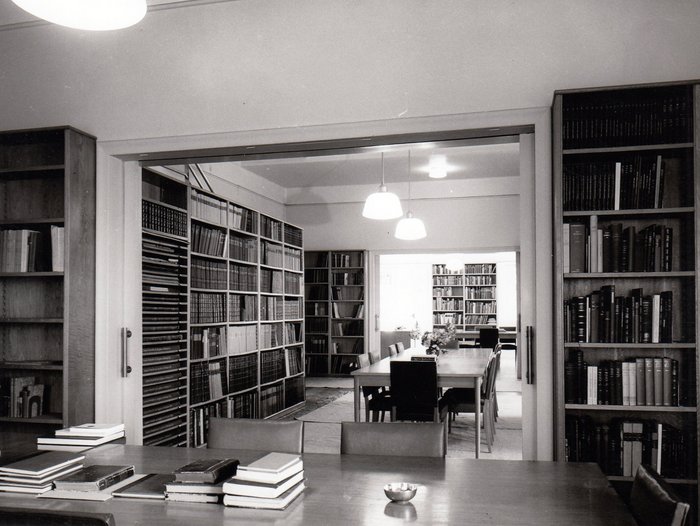History
The almost 130 years of history of the DAI in Cairo are marked by continuity but also intermissions and new beginnings.
The Egyptological Institute under German Imperial rule
The Kaiserliche Deutsche Institut für ägyptische Altertumskunde in Kairo was founded at the request of Adolf Erman (1854-1937) in 1906. Ludwig Borchardt (1863-1938) was appointed as its first director on 5 Augustof the following year. With the establishment of the institute, the funding of the photo library, the library (Ebers-Bibliothek) provided by Friedrich Wilhelm von Bissing (1873-1956), the field equipment, as well as the Deutsches Haus in Thebes, built in 1904 as an international guest house for a dictionary project, were merged to one budget item. The financial plan, however, fell short of foreseeing a separate institute building. Borchardt, therefore, at first managed his business from his private estate in the Zamalek district. But in 1909, he acquired the villa neighbouring his home at Sharia Aziz Abaza no. 11 where he instated the institute, whose maintenance was largely upheld through his private means, in spite of an existing lease agreement with the institute.
The Cairo institute thus by virtue existed on paper only. The instructions in force thus excluded both independent research projects and scholarly publications, contrary to those for the Imperial German Archaeological Institutes in Rome and Athens. Borchardt's archaeological initiatives before WWI were therefore commissioned by the Berlin museums and carried out by him privately and also by the Deutsche Orient-Gesellschaft (German Oriental Society).
With the outbreak of WWI, the institute was for the first time compelled to close.
The institute under the Weimar Republic and the Third Reich
After the war the institute was at the verge of shutting down entirely. Borchardt was able to avert this through an appeal from Swiss professors to the German Foreign Office by provoking the return of the confiscated buildings and the institute's inventory, including the so-called Ebers-Bibliothek.
Probably concurring with the structural changes in Germany's university landscape, Georg Steindorff (1861-1951) campaigned as from 1924 against Borchardt's resistance, for a takeover of the institute ofEgyptology to the financially more viable German Archaeological Institute. The independent Deutsche Institut für ägyptische Altertumskunde in Kairo was to be integrated as a new department to the DAI, the latter already being represented abroad with a department in Rome since 1829 and later in Athensas from 1874. By encouragements of Steindorff and the DAI president, Gerhart Rodenwaldt (1886-1945), the Catholic priest and Egyptologist Hermann Junker (1877-1962) was appointed for the post of the department's director in 1927.
In 1929, the 'old' Cairo institute was folded up and the new Cairo Department structurally adapted to the DAI by 1930 under Junker's supervision. With this merger, the research spectrum was extended into the Islamic period.
Immediately after the outbreak of the WWII, the institute was occupied under British command on 3 September 1939 and the inventory confiscated. The department's operations were suspended until further notice.
The institute's reconstruction after WWII
The founding of the Federal Republic of Germany on 24 May 1949 created the prerequisites for the reconstruction of the department. The nomination of Hanns Stock (1908-1966) as acting head of the Cairo Department and the latter's inclusion to the DAI budget in 1955 launched the procedures for its reopening. A residence in the Sharia Abu el-Feda in the Zamalek district was rented and since its acquisition in 1958 has remained the institute's quarters until today.
Despite repeated efforts, the return of the institute's library after its confiscation in WWII remained unsuccessful. Stock, therefore, at first made do through book donations from Germany and the Egyptian Antiquities Organization, as well as through purchases. With the acquisition of Ludwig Keimer's (1892-1957) large specialist library (approx. 12,000 volumes) and photo collection (approx. 3,000 pictures) subject-related resources for research purposes again became available at the institute as from 1957.
Whilst research at the new Cairo Department was and continues to focus on Egyptology and Coptic studies, Stock also called for positions specialising on Egypt's Islamic periods. To this very day, the scholars at the DAI Cairo have been active within this broad spectrum of Egyptian history.
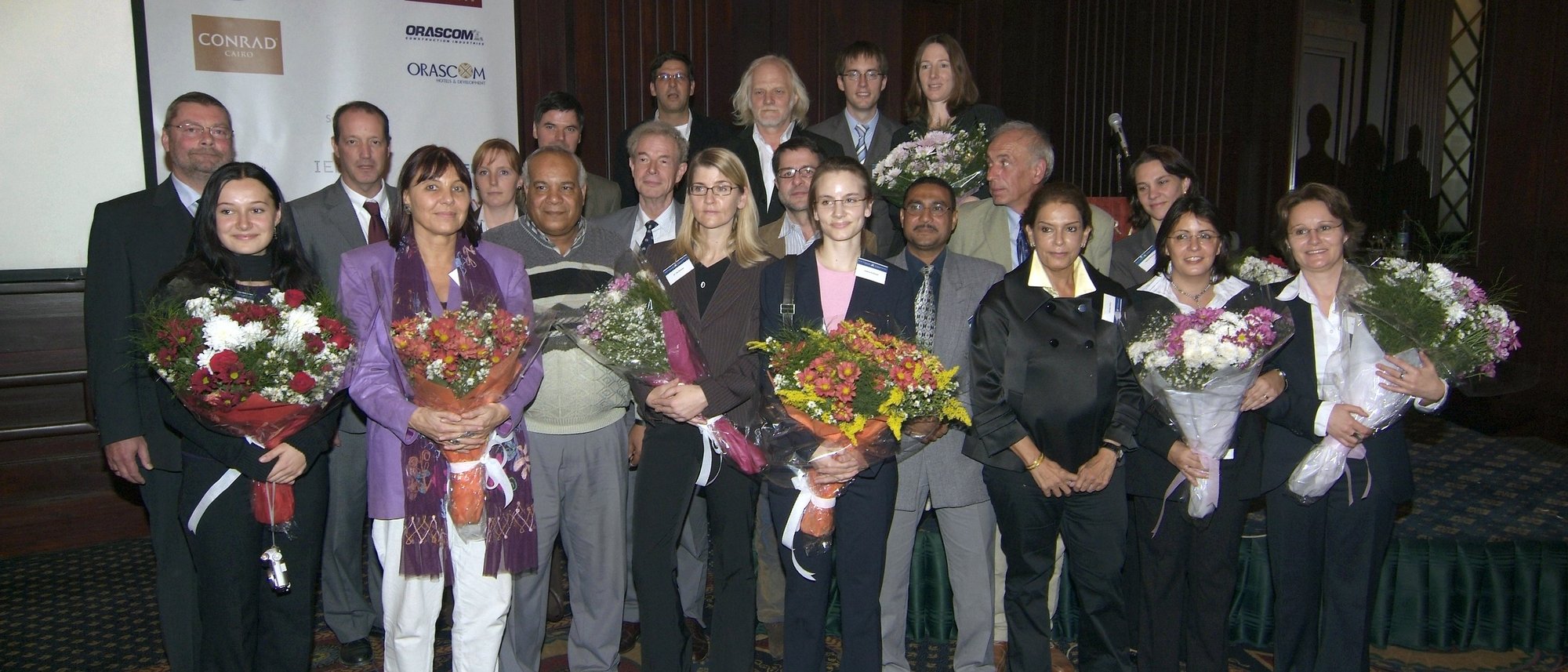
Alle an der 100 Jahrfeier beteiligten Mitarbeiter*innen des Instituts nach der Schlussveranstaltung des Symposiums © DAI
The department's more recent history since the mid-1960s
Just as the Institute was experiencing a work-productive period whilst laying the foundations for larger, own projects, Hanns Stock succumbed in a car accident in June 1966. Until the election of Werner Kaiser (1926-2013) as the institute's new director on 1 November 1967, Wolfgang Müller-Wiener (1923-1991) and subsequently Jürgen Settgast (1932-2004) took over the charge of its custody.
In 1968, Rainer Stadelmann (1933-2019) was elected to the new position of second director at the Cairo Department. Together, Kaiser and Stadelmann launched research programmes that already had been planned, although not implemented by Stock. Thus, the longstanding excavation activities at Abu Mena, Dahshur, and Buto among other projects is traceable back to to the time of Hanns Stock. In 1969, Kaiser began excavations on Elephantine Island. This long-term investigation project complemented already ongoing investigations within Egypt's urban and settlement research. At the same time, with the launching of work at Abydos, attention was also given to the Pre- and Early Dynastic periods, which thereby also took into consideration Kaiser's own research agenda.
In December 1988, Rainer Stadelmann was appointed first director. During his tenure, new projects were launched, hence also the one at Dra'Abu el-Naga in 1991 headed by Daniel Polz who became second director in 1999.
On 1 November 1998, the department's direction was transferred to the former second director, Günter Dreyer (1943–2019), who continued to work on the issues outlined by Werner Kaiser. Dreyer's research focussed on the pre- and early history of Egypt and stimulated the use of new digital methods and technologies in archaeological operations.
Stephan J. Seidlmayer was appointed the department's first director in 2008. He continued the research on settlement which he supplemented with approaches from landscape archaeology and network-based methods. For this matter, emphasis was further laid on the recording of livelihood conditions. Moreover, research on function and communication pertaining to sacred and cultic spaces is one of the department's central concerns.

